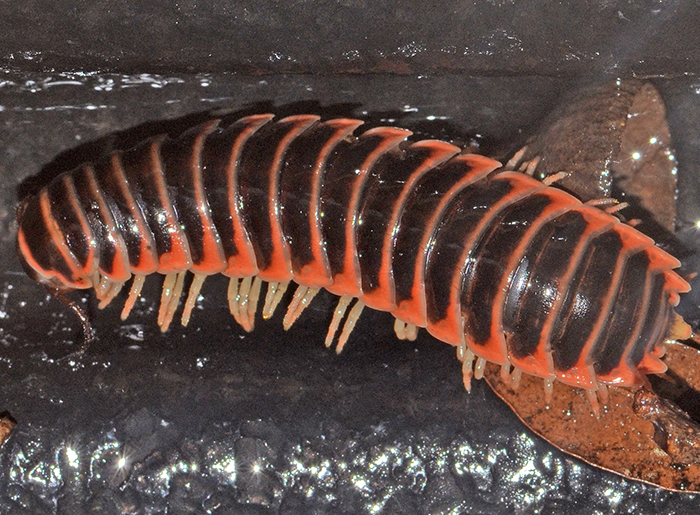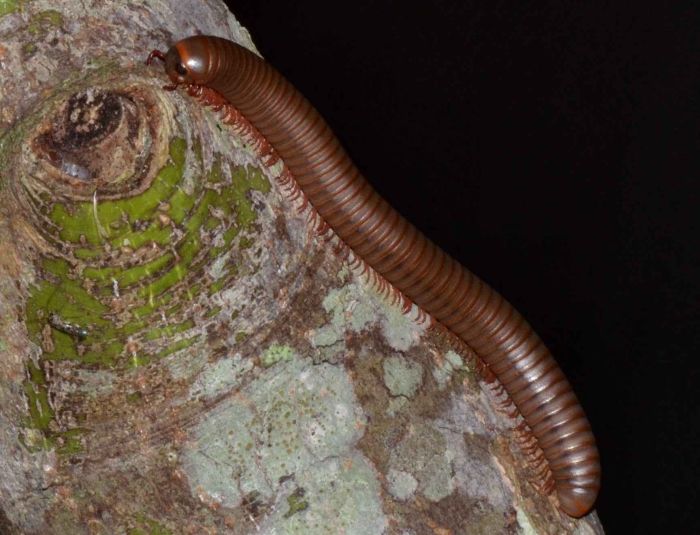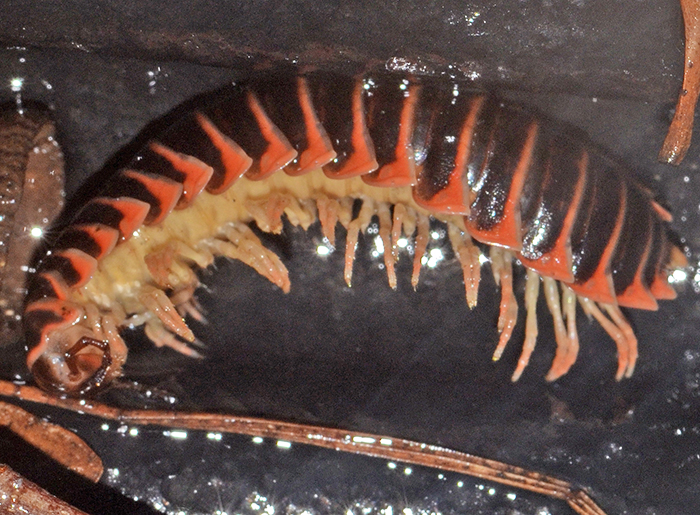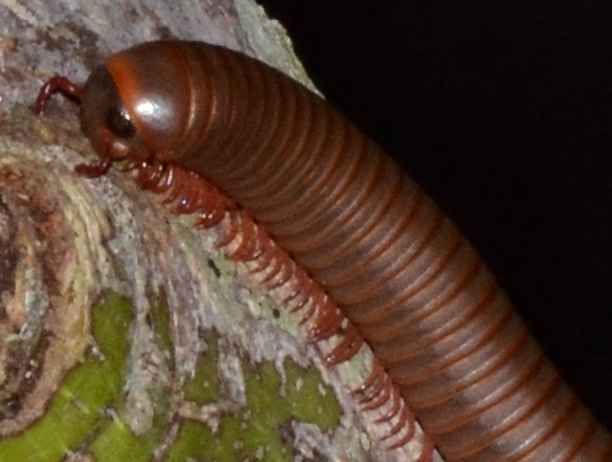 Sigmoria planca. | I found a couple of these millipedes under our garbage carts. I moved one of them to my truck bed that had collected some rain water, and was really surprised to see the millipede run into the water where it tried to hide. They are probably Sigmoria planca. The genus has 15 species in the US.
bug guide (these photos): https://bugguide.net/node/view/1547714 | |
 Oxidus gracilis (?) (Greenhouse Millipede). | This millipede is in the family Paradoxosomatidae. A good guess is Oxidus gracilis. This very frequent species is a classic example of an exotic organism that has been introduced into distant parts of the world where the forces that hold its populations in check do not exist. It never feeds on living plants but exclusively on decaying plant matter. The second link states that the general appearance of O. gracilis is very similar to Orthomorpha coarctata. Both millipedes exist in Florida. They are active during the night but show the most activity in the morning. bug guide (this photo): http://bugguide.net/node/view/685578 Bennett and Kerr, "Millipedes in and Around Structures in Florida" Florida Entomol. 56, 43 (1973): http://journals.fcla.edu/flaent/article/view/56759/54438 | |
 Hemiscolopendra marginata (Eastern Bark Centipede). | Okay, this strange, little alien hitchhiked on my pants into out house. I've counted 20 (21?) pairs of legs that moved in a beautiful wave-like motion. Like in other centipedes, the first pair of legs evolved into venomous fangs. This specimen must be young because the maximal body length of this species is about 3". They are commonly found under loose bark and logs. The second link states that "Bites from tree centipedes are painful but not much worse than a bee sting." bug guide (this photo): http://bugguide.net/node/view/1441289 "Beautiful Nightmares": https://phrynus.wordpress.com/2015/10/31/north-americas-big-five-centipedes/ | |
 Narceus americanus (Worm millipede). | This Worm Millipede is Narceus americanus. It is approximately twice as large as other millipede species in North America and also the most common one. They curl up when threatened and can release a liquid containing benzoquinones which cause burns and skin discoloration.
bug guide (this photo): http://bugguide.net/node/view/562505 wikipedia: http://en.wikipedia.org/wiki/Narceus_americanus |


